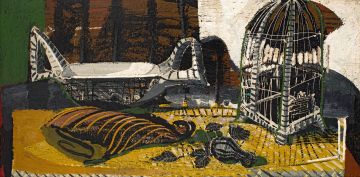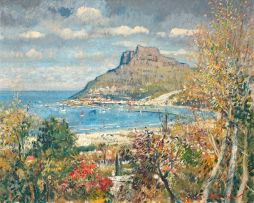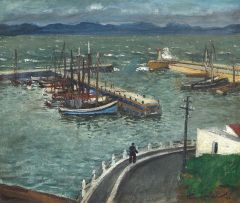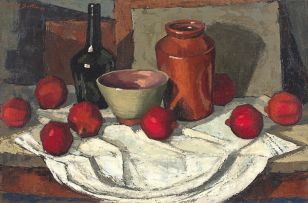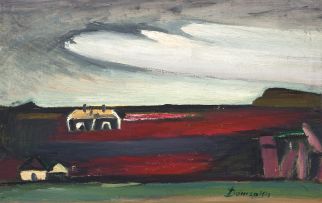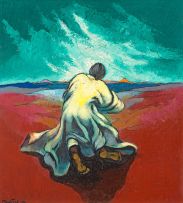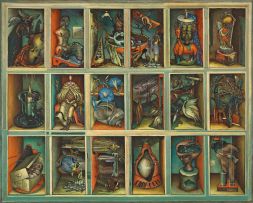19th century, Modern, Post-War and Contemporary Art, Decorative Arts and Jewellery
Live Auction, 18 March 2019
19th century, Modern, Post-War and Contemporary Art
About this Item
signed and dated 1954; signed, inscribed with the title and 'Paris' on the reverse
Notes
"Christo Coetzee's earliest work (1947-1955) is associated with genre painting. In his topology, he calls this phase 'intuitive remembrance'. The famous still-lifes exhibited at the Hanover Gallery in London in 1955 Coetzee himself referred to as 'Pompeian Genre' paintings. Says one reviewer, in The Scotsman on 20 March 1955, 'The painter has a passion for fish of all sorts and, indeed, of no sorts at all. For whenever he has a fancy for a fish of a particular shape, he merely creates one. There is nothing snipping a tail or adding a fin … the painter seems to invest everything with a Pompeian splendour.' Oswell Blakestone, a London-based reviewer of the Hanover exhibition, writes, 'Treat yourself to Christo Coetzee. Paints are used like jewels and the still-lifes have a richness that makes us forget the hour.'"1
1. Alet Vorster and Wilhelm van Rensburg (eds.) (2018) The Safest Place is the Knife's Edge: A Retrospective Exhibition of the Works of Christo Coetzee (1929-2000), Johannesburg: Standard Bank. Page 31.
Provenance
Celia Denney Collection, Spain.
Deon Viljoen Fine Art, Cape Town, 13 October 2001.
Stephan Welz & Co, Cape Town, 17 October 2006, lot 566.
Exhibited
Hanover Gallery, London, 1955.
London Group at the New Burlington Gallery, 6 November to 4 December 1954, number 302.
Standard Bank Gallery, Johannesburg, The Safest Place is the Knife's Edge: Christo Coetzee (1929-2000), 5 October to 1 December 2018.
Literature
Michael Stevenson and Deon Viljoen (2001) Christo Coetzee: Paintings from London and Paris 1954-1964, Cape Town: Fernwood Press. Page 14 and illustrated on page 15.
Alet Vorster and Wilhelm van Rensburg (eds.) (2018) The Safest Place is the Knife's Edge: A Retrospective Exhibition of the Works of Christo Coetzee (1929-2000), Johannesburg: Standard Bank. Illustrated in colour on pages 36 and 37.

